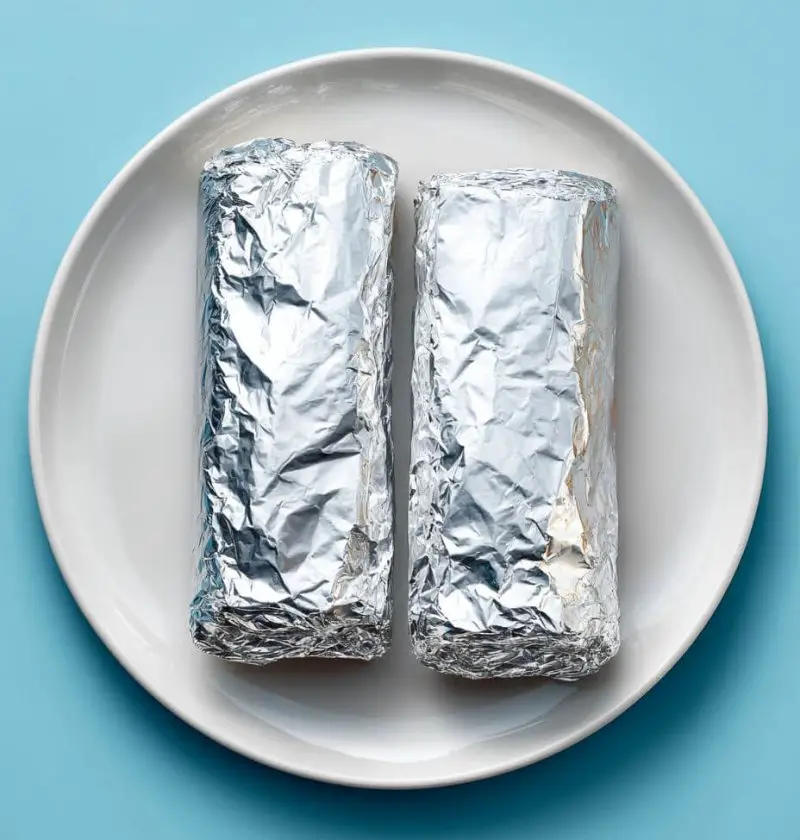Save This Recipe
If you’ve ever stood in your kitchen, foil in hand, staring at it like it just insulted your mother, you’re not alone.
You’re wrapping leftovers or lining a pan, and suddenly—the question hits.
Wait… does it matter which side of the foil I use? Shiny side up or down? Am I doing it wrong?
I’ll be honest, I’ve heard this debate more times than I’ve burned toast (which is saying something). Some folks are adamant: shiny side out! Others swear by dull side down. And then there are those of us who just… wing it.
Well, today we’re putting that age-old mystery to bed once and for all—with a little science, a bit of common sense, and just enough kitchen know-how to help you feel like a pro.
So, Why Does Foil Have Two Sides?
Here’s the simple truth: the shiny and dull sides of aluminum foil exist because of how it’s made—not because they serve different purposes.
Foil starts as big ol’ slabs of aluminum that get rolled out thinner and thinner (we’re talking whisper-thin). In the final step, two sheets are rolled together at the same time. The sides that touch the rollers get polished and shiny. The sides that face each other? They come out dull. That’s it.
No magic. No secret sauce. Just metal and machines doing their thing.
Does the Shiny Side Actually Work Better?
Ah, the million-dollar question. In short: nope, not really.
While the shiny side is a little more reflective—especially when it comes to heat—it’s not a game-changer for most of what you’re doing in the kitchen. The difference in reflectivity is small. Like… really small. We’re talking less than 10% difference, according to the material science folks.
So whether you’re baking potatoes or covering a casserole, it’s not going to make or break dinner.
When (If Ever) the Shiny Side Might Help
Okay, that said—there are a few little scenarios where the shiny side might give you a tiny edge. Emphasis on tiny.
-
Trying to reflect heat back into food? Like when you’re broiling something? Put the shiny side facing in.
-
Trying to keep heat away from something? Maybe when wrapping something delicate in a hot oven? Then shiny side out might make a smidge of a difference.
-
Trying to keep food warmer for longer? Wrap it with the shiny side facing out to reflect a bit of heat inward.
But again, we’re not talking about night-and-day differences here. This is “maybe it’ll help keep it warm for an extra five minutes” territory—not “ruin Thanksgiving dinner” territory.
Dull Side Love: It Has Its Moments Too
Honestly, most people who swear by the dull side aren’t thinking about heat at all—they just like that it’s easier to write on. Slap a date or a name on that leftover lasagna without the ink smearing or sliding off. That’s the kind of everyday detail I can get behind.
Also: if you’ve got really bright kitchen lighting, the dull side cuts down on glare. Shiny foil can practically blind you when it catches the light just right.
What About Non-Stick Foil?
Now here’s where sides actually do matter.
If you’re using that fancy non-stick aluminum foil (and I do love a sheet of it when I’m roasting sticky stuff), the non-stick coating is only on one side—and guess what? It’s the dull side.
So if you’re laying down non-stick foil, make sure the dull side is facing your food. Otherwise, you’ll be wondering why your cheese-crusted chicken is stuck to the “non-stick” foil like it’s super-glued.
Busting the Myths (Because They’re Everywhere)
Let’s clear the air on some of the more popular tall tales floating around kitchens:
-
“Always cook with the shiny side up to reflect heat!” — Not necessary. Either side works.
-
“Dull side keeps moisture in.” — Nope. Both sides are equally good at sealing in moisture.
-
“The foil is treated differently on each side.” — Not true, unless you’re using specialty foil like the non-stick kind.
The shiny/dull thing is just a result of the manufacturing process. Not a secret code from aluminum wizards.
Everyday Foil Tips That Actually Matter
Let’s focus on what does matter when it comes to using foil smartly:
-
Use foil to line pans when baking or roasting — makes cleanup a breeze.
-
Wrap leftovers tightly to keep them fresh longer in the fridge or freezer.
-
Use foil packets for grilling veggies or fish — locks in steam and flavor like a dream.
-
Avoid wrapping acidic foods (like tomatoes or citrus) directly in foil — the acid can react with the metal and affect flavor.
-
Don’t microwave foil unless your microwave manual says it’s safe — which most don’t. Sparks are fun in fireworks, not in appliances.
So… Shiny Side Up or Down?
Here’s the bottom line: it doesn’t really matter.
Unless you’re using non-stick foil (where the dull side is important), you can use either side without worrying. Shiny, dull—it’s all aluminum foil, and it’s all doing its job just fine.
So go ahead and line that pan, wrap that sandwich, or toss that foil ball to the cat for a quick game of chase (hey, no judgment here). Just know that whichever side you use, you’re doing it right.
Final Thoughts (From a Kitchen That’s Seen Its Share of Foil Debates)
It’s funny how something as simple as a roll of foil can cause so much kitchen drama, isn’t it? But now you know the truth—it’s just how it’s made, not some grand cooking conspiracy.
So the next time someone brings up the “right” way to use foil, you can smile, nod, and say:
“Whichever side works, darling. They’re the same.”
And just like that, you’ve added a little wisdom to your kitchen—and saved yourself from one more unnecessary decision in the day. Because we’ve got enough of those already, don’t we?

